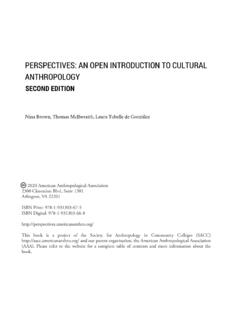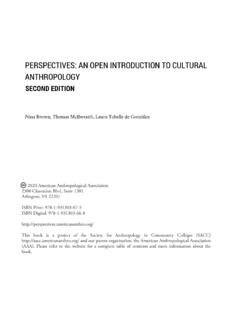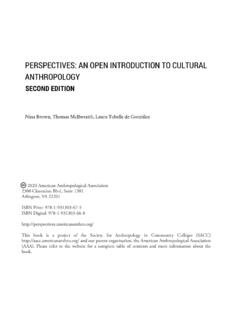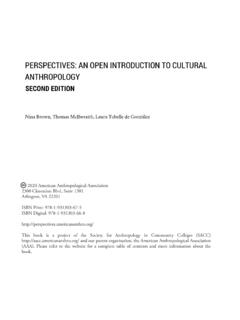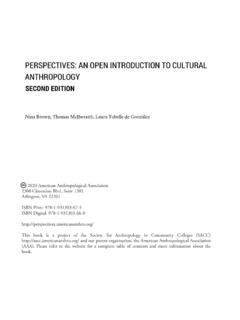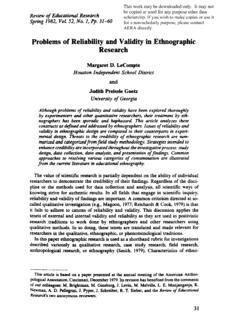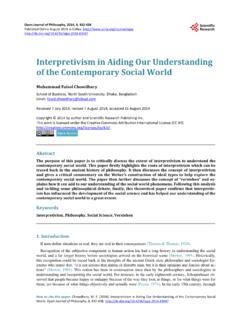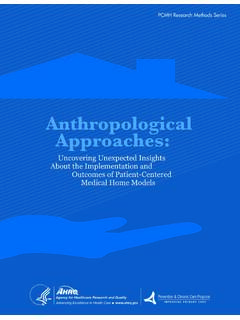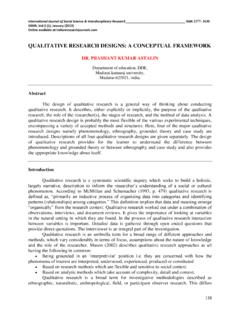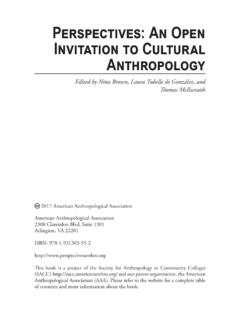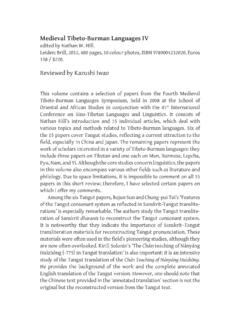Transcription of Perspectives: An Open Introduction to Cultural …
1 PERSPECTIVES: AN open Introduction TO Cultural ANTHROPOLOGY Nina Brown, Thomas McIlwraith, Laura Tubelle de Gonz lez 2020 American anthropological Association2300 Clarendon Blvd, Suite 1301 Arlington, VA 22201 ISBN Print: 978-1-931303-67-5 ISBN Digital: 978-1-931303-66-8 book is a project of the Society for Anthropology in Community Colleges (SACC) and our parent organization, the American anthropological Association (AAA). Please refer to the website for a complete table of contents and more information about the EDITIONP erspectives: An open Introduction to Cultural Anthropology by Nina Brown, Thomas McIlwraith, Laura Tubelle de Gonz lez is licensed under a Creative Commons Attribution-NonCommercial International License, except where otherwise noted.
2 Under this CC BY-NC copyright license you are free to: Share copy and redistribute the material in any medium or format Adapt remix, transform, and build upon the material Under the following terms: Attribution You must give appropriate credit, provide a link to the license, and indicate if changes were made. You may do so in any reasonable manner, but not in any way that suggests the licensor endorses you or your use. NonCommercial You may not use the material for commercial purposes. 5 5 SUBSISTENCE SUBSISTENCE Isaac Shearn, Community College of Baltimore County Learning Objectives Learning Objectives Identify the four modes of subsistence and describe the major activities associated with obtaining food in each system.
3 Explain the difference between wild and domesticated resources and how plants and animals are domesticated. Explain the relationship between the subsistence system used in a society and the amount of private property or wealth differ-ences that develop. Assess the ways in which subsistence systems are linked to expectations about gender roles. Categorize the social and economic characteristics associated with agriculture and describe the benefits and drawbacks of the agricultural subsistence system. Analyze the ways in which the global agricultural system separates producers from consumers and contributes to wealth differ-ences.
4 Appraise the ways in which human intervention in the environment has made it difficult to separate the natural from the human-influenced environment. Think about the last meal you ate. Where did the ingredients come from? If it was a cheeseburger, where did the cow live and die? Now think about all the food you consume in a normal week. Can you identify the geographic origin of all the ingredients? In other words, how much do you know about the trip your food took to arrive at your plate? How much you know about where your food comes from would tell an anthropologist something about the subsistence system used in your community.
5 A sub-sistence system is the set of practices used by members of a society to acquire food. If you are like me 96 Figure 1: Carrying Capacity: The area in the orange box, which is not under cultivation, might provide enough resources for a family of four to survive for a year. An equivalent area, marked by the blue box, could provide enough resources for a significantly larger population under intensive agricultural cultivation. and you cannot say much about where your food comes from, then you are part of an agricultural soci-ety that separates food production from consumption, a recent development in the history of humans.
6 People who come from non-agricultural societies have a more direct connection to their food and are likely to know where 100 percent of their food comes from. Finding food each day is a necessity for every person no matter where that person lives, but food is not just a matter of basic survival. Humans assign symbolic meaning to food, observing Cultural norms about what is considered good to eat and applying taboos against the consumption of other foods. Catholics may avoid meat during Lent, for instance, while Jewish and Islamic communities forbid the consumption of certain foods such as pork.
7 In addition to these attitudes and preferences, every society has preferred methods for preparing food and for consuming it with others. The Cultural norms and attitudes surrounding food and eating are known as foodways. By studying both the subsistence system used by a society to acquire food and the foodway associated with consuming it, anthropologists gain insight into the most important daily tasks in every society. STUDYING SUBSISTENCE SYSTEMS Since the need to eat is one of the few true human universals, anthropologists have studied subsis-tence systems from a variety of perspectives.
8 One way to think about the importance of food for human populations is to consider the number of calories an individual must obtain every day in order to sur-vive. Anthropologists use the term carrying capacity to quantify the number of calories that can be extracted from a particular unit of land to support a human population. In his 1798 publication An Essay on the Principle of Population, Thomas Malthus argued, the power of population is indefinitely greater than the power in the earth to produce subsistence for man. 1 He suggested that human populations grow at an exponential rate, meaning the population climbs at a rate that is constantly increasing.
9 How-ever, the availability of resources in the environment increases at only an arithmetic rate, which means that left unchecked human populations would soon outstrip the environment s ability to provide sus-tenance. Malthus famously argued that war, famine, and disease were good or at least functional in the sense that they kept populations from growing too large. While Malthus presented a grim view of humanity s future, research suggests that the rate of human population growth, currently about one percent per year, is actually slowing. It is also not necessarily true that population growth has an entirely negative impact on human communities.
10 The Danish economist Ester Boserup, for example, argued that human history reveals a connection between popula-tion growth and Cultural innovation, particu-larly innovation in farming techniques. Because necessity is the mother of invention, she reasoned, the pressure of having more mouths to feed could be the dynamic that dri-ves societies to develop new anthropological studies of subsistence systems draw on insights and perspectives from sev- 97eral different fields, including biology, chemistry, and ecology, as w ell as a range of ethnographic techniques.

